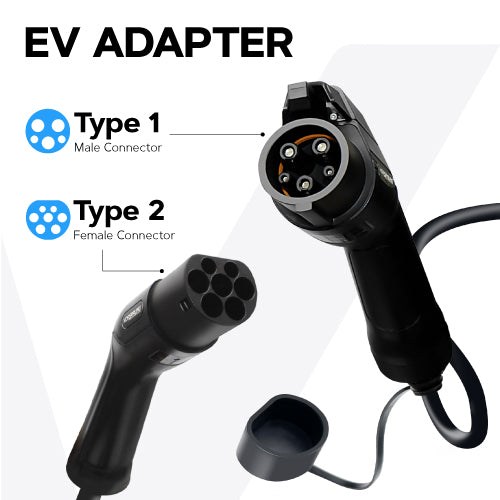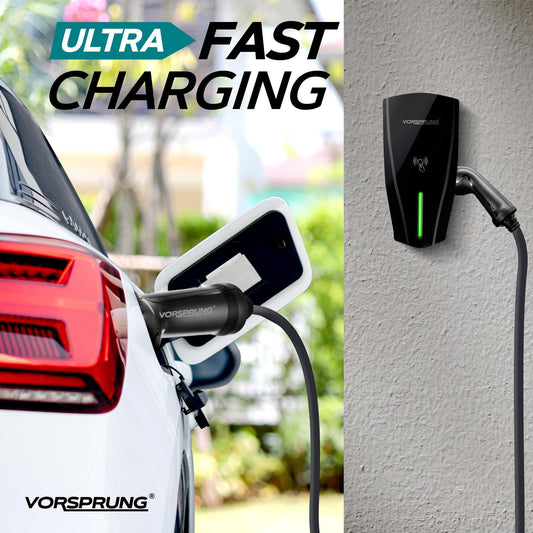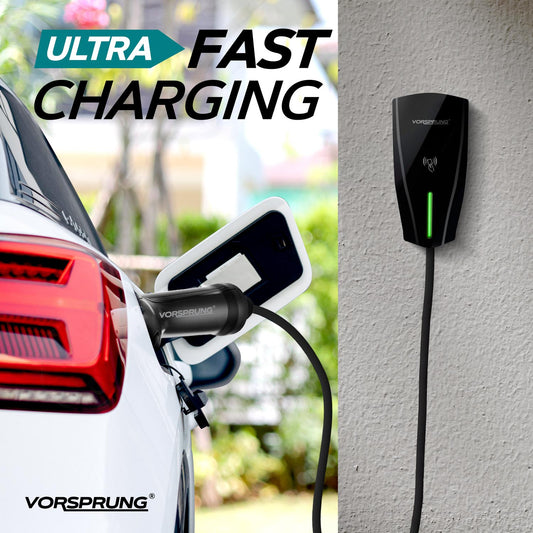
Electric Vehicle Public Charging Guide
Share
Electric cars are becoming more and more popular, as people look for ways to reduce their carbon footprint. If you're thinking about buying an electric car, it's important to understand how to charge it.
The range of electric cars is increasing all the time. This means that you can now travel further on a single charge, making electric cars a more practical option for many people.
In this blog post, we'll discuss the different ways to charge an electric car, the cost of charging, and some tips for etiquette when using charging stations.
How to Charge an Electric Car
There are three main ways to charge an electric car:
- At home: This is the most convenient way to charge your electric car, as you can do it overnight while you're sleeping. You can install a dedicated EV charger at your home, or you can use a regular 3-pin plug.
- At work: Many workplaces are now installing EV chargers, so you can charge your car while you're at work. This is a great way to top up your battery during the day, so you're never left stranded.
- At public charging stations: There are now public charging stations all over the UK, so you can always find one when you need it. Public charging stations can be slow, fast, or rapid, so it's important to check the type of charger before you plug in.
The Cost of Charging an Electric Car
The cost of charging an electric car will vary depending on how you charge it. Charging at home is usually the cheapest option, as you can take advantage of off-peak electricity rates. Charging at work is often free, and charging at public charging stations can vary in price.
How to Charge at a Public Charging Station
- Finding a charging station: There are a number of apps and websites you can use to find the nearest charging station. For example, Zap-Map, PlugShare, and ChargeMap are popular apps for locating charging stations.
- Registering for an account: Many charging stations will require you to create an account and register a payment method before you can start using their services.
- Connecting your EV to the charger: Once you’ve located a charging station, you’ll need to plug your EV into the charger using the appropriate connector for your vehicle.
- Starting the charge: After you’ve connected your EV to the charger, you’ll need to start the charge. This can usually be done through the charging station’s app or website.
- Paying for the charge: When you’ve finished charging, you’ll need to pay for the electricity you’ve used. This can either be done through the charging station’s app or website, or through a payment card provided by the charging station.
How long does it take to charge?
- Rapid chargers (50 kW or above): can provide a full charge in around 30-60 minutes, depending on the EV.
- Fast chargers (7-22 kW): can provide a full charge in around 2-4 hours, depending on the EV.
- Slow chargers (up to 3 kW): can take anywhere from 6-12 hours to provide a full charge.
Note that some charging stations may limit the amount of time you can charge your EV for, so it’s always a good idea to check the details of the charging station before you arrive.
Charging Etiquette
When using public charging stations, it's important to be considerate of other EV drivers. Here are some tips for charging station etiquette:
- Don't hog the charging station. If your car is fully charged, move it so that someone else can use the charger.
- Don't unplug someone else's car. This is impolite and could even be seen as theft.
- Don't park in an EV charging bay if you're not charging your car. This is illegal in some places.
Conclusion
Charging an electric car is easy, and there are many different ways to do it. By following the tips in this blog post, you can ensure that you're charging your car efficiently and respectfully.






